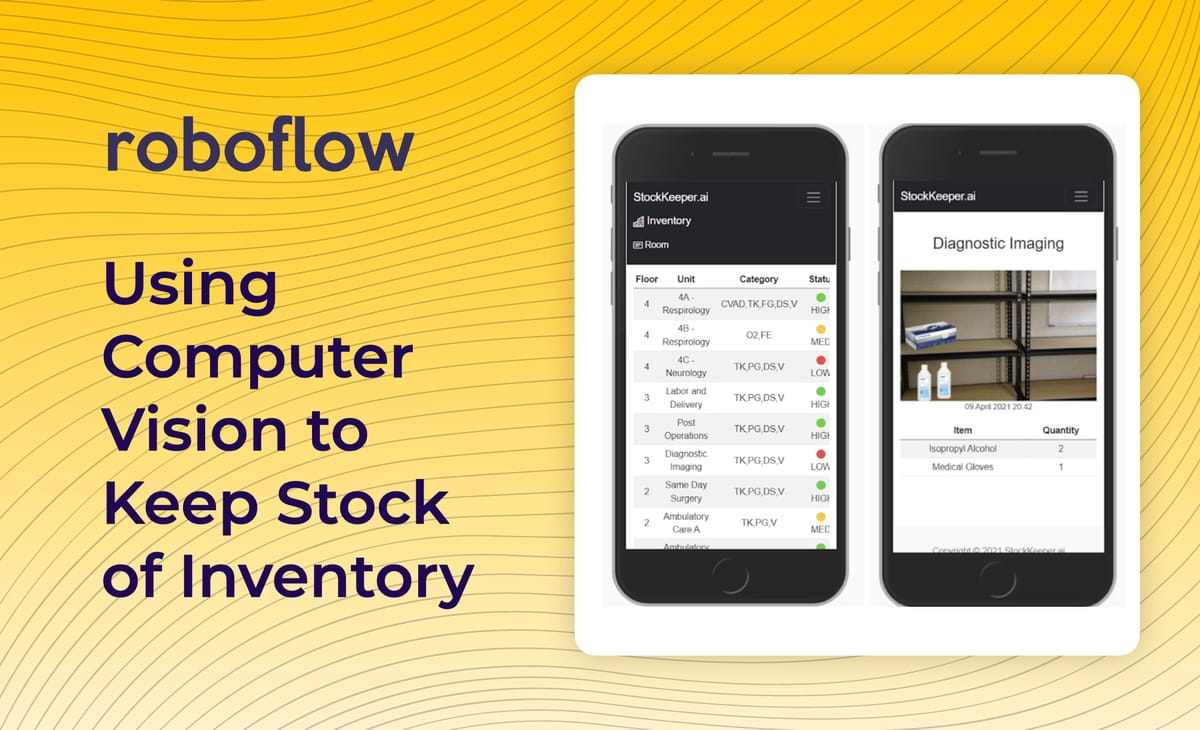
Many hospitals across Canada have an inefficient, analog way of managing their medical supplies. Inventory management today is mostly overseen by an internal logistics team in charge of tracking supplies by routinely walking to supply rooms to tally inventory levels with paper and pen. So today, we'll share how to use computer vision to keep stock of inventory.
Issues with Manual Inventory Management
Commonly, the only way for nurses and hospital staff to check the availability of a certain supply is to run around the hospital or call up various departments to see if they can spare supplies. Crystal Hu, a nurse working at three major hospitals in Toronto (and one of our teammates), said she spends 10-15 minutes looking for supplies per task. This a major source of frustration for herself and her coworkers.
Poor inventory management in hospitals results in:
- Time wasted on counting and finding supplies.
- Time wasted locating expired products.
- A lack of visibility into the supply and demand for hospital supplies, and thus there is a lack of predictability over the rate of supply utilization.
- Staff being underutilized while doing repetitive tasks that can be automated.
We wanted to help hospital workers transition from struggling to find supplies to focusing more on providing quality patient care. We found a large opportunity for improvement, the potential for cost-savings, and the possibility of a more efficient supply management system.
Automated Inventory Management with Computer Vision
Our solution to this problem is to create a responsive web application that would give real-time updates to hospital room supplies. Using video monitoring of the shelves, machine learning algorithms would recognize the types and quantities of available supplies.
The prototype consisted of an object detection model recognizing supplies and their quantities plus a responsive front-end. The user can click on a room to view the live photo feed of the room’s supplies, as well as a table of its supplies and quantities.

Our system would ideally be applied province-wide across the Ontario healthcare system to enable sharing of supplies between hospitals, as well as balancing of supplies based on historical usage data.
Inventory Management: Keep Stock of Inventory Powered by Roboflow
In order to quickly process the large number of images required to detect the medical objects and ensure we could export to a variety of formats, we used Roboflow to annotate our images. It allowed us to break the annotation work up among our team and simultaneously label images. We then applied mosaic augmentation to our 378 images to increase the size of our dataset, resulting in improved model performance. We were able to quickly try out different augmentations and train them using Roboflow’s training service.
Using Roboflow Train, we finished fitting our model in under half an hour, and the provided API allowed us to easily send and receive requests. We connected our web app, and were successful in getting a working prototype set up by the end of the 30-hour hackathon!
Real-Time Automated Inventory Monitoring
By having real-time updates to inventory of all rooms across hospitals, healthcare workers will save a significant amount of time looking for supplies. As such, healthcare providers have more time for patient care and have increased trust and confidence in their facilities.

Hospitals will have a more cost-effective supply chain and a more efficient workforce. At a more macro level, provinces can access a more robust data system that provides insight on supply demands and distribution.
Roboflow was instrumental in the success of our 30-hour hackathon project. Using Roboflow, we were able to easily augment our dataset. Roboflow saved us tens if not hundreds of hours that we would otherwise spend gathering more images, writing code, and training our models. The hackathon judges were thoroughly impressed by our machine learning solution and the efficiency it would bring to the Ontario health care system. We won second place in Geekspeak's 2021 Hack for Good Competition!
You can watch our pitch here:
We won second place in Geekspeak's 2021 Hack for Good Competition!
This is a guest post written by Steven Pereira, Crystal Hu, Joanna Liu, Yuting Shen, and Frank Zhou. It has been lightly edited by the Roboflow team.
Cite this Post
Use the following entry to cite this post in your research:
Matt Brems. (Apr 18, 2021). How to Use Computer Vision to Keep Stock of Inventory. Roboflow Blog: https://blog.roboflow.com/using-computer-vision-to-keep-stock-of-inventory/
